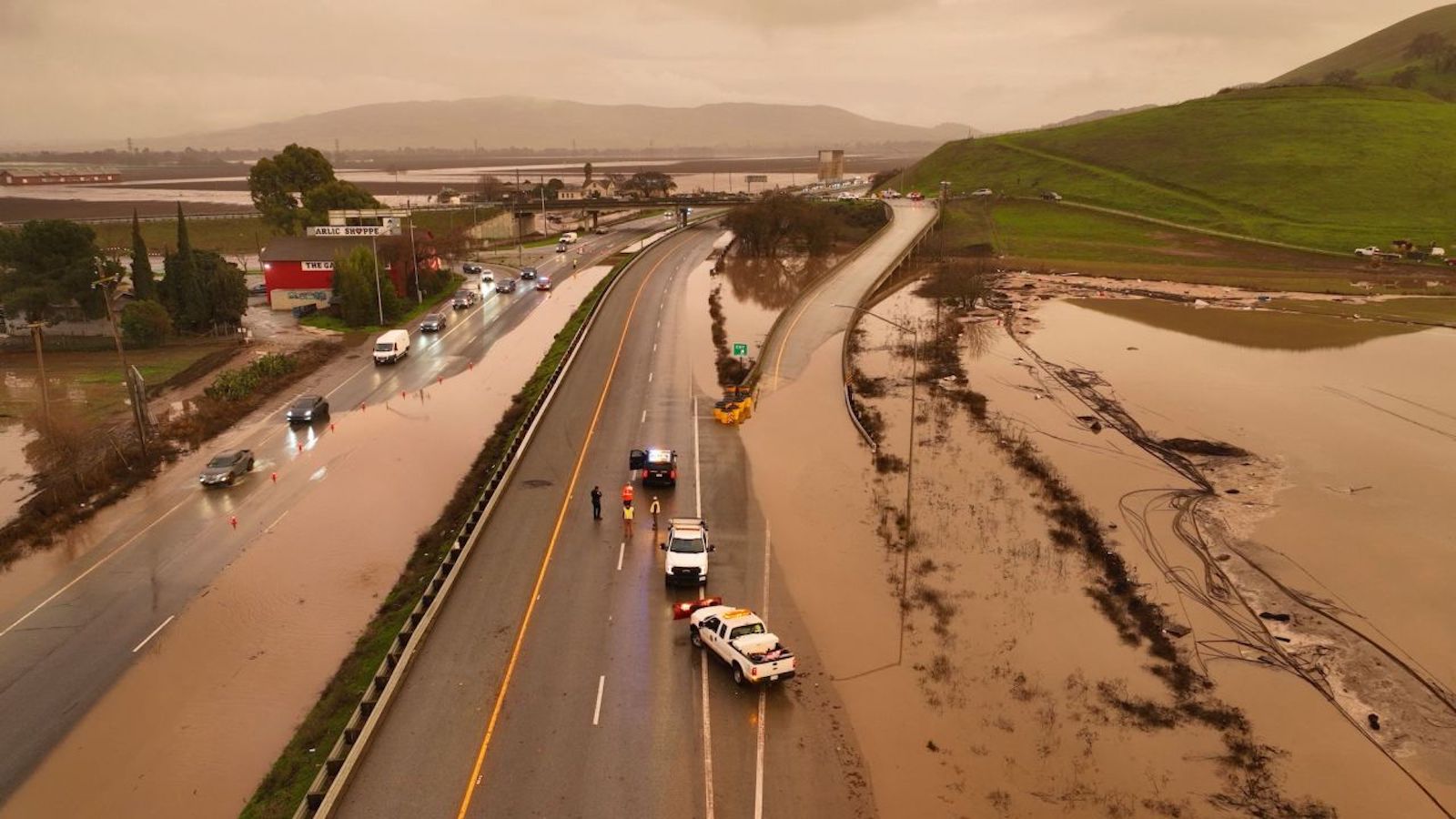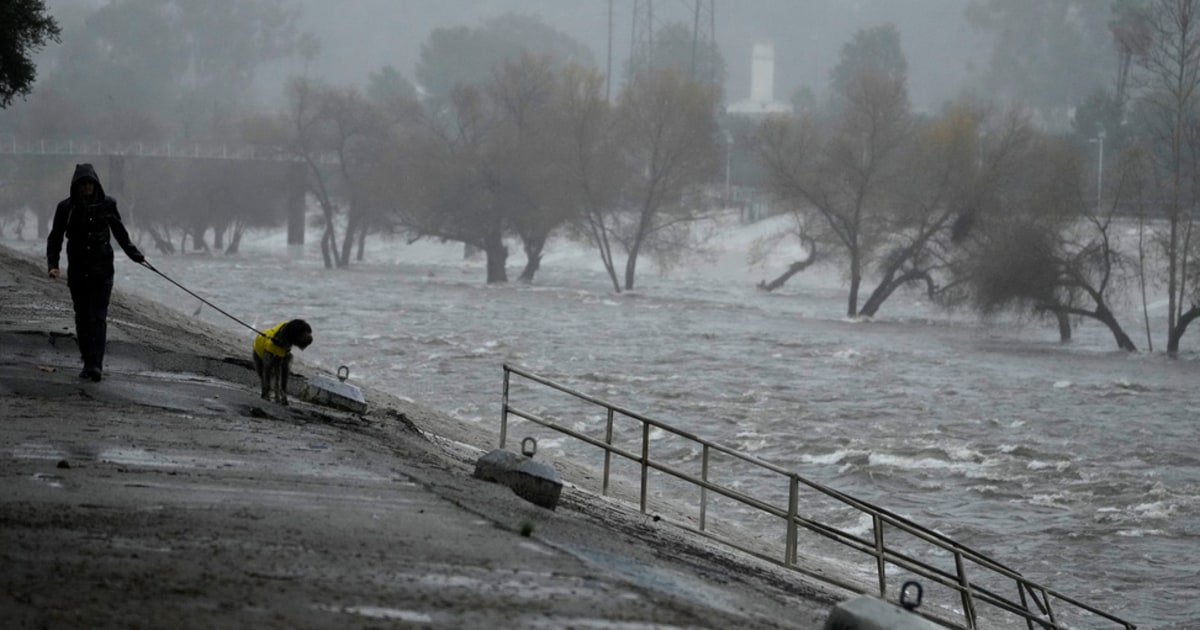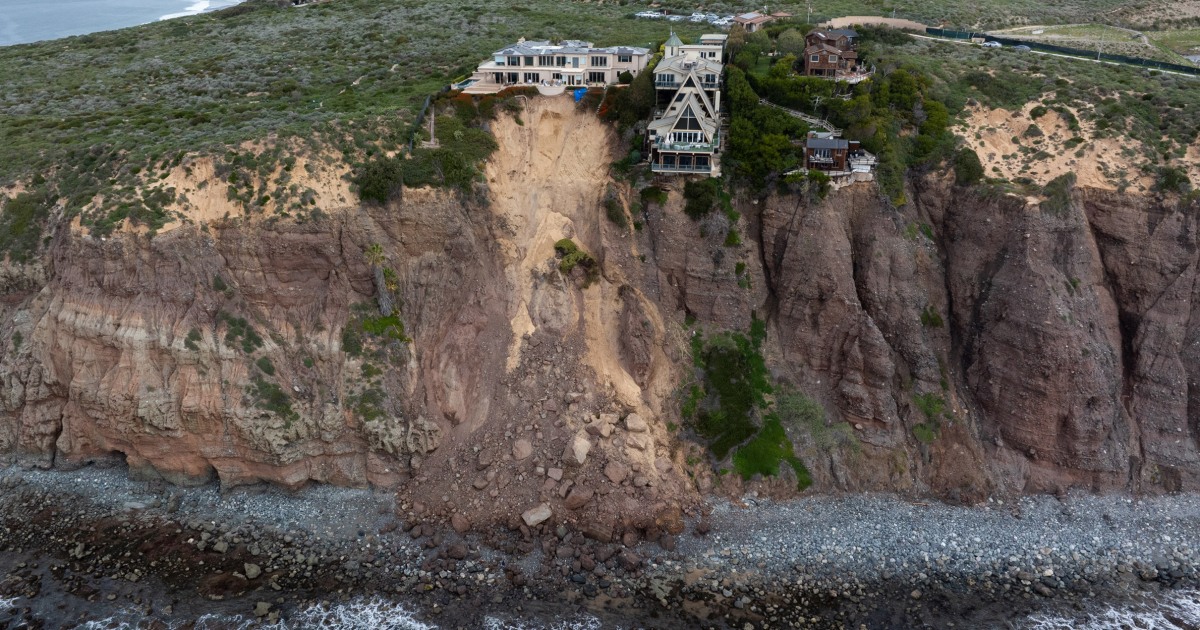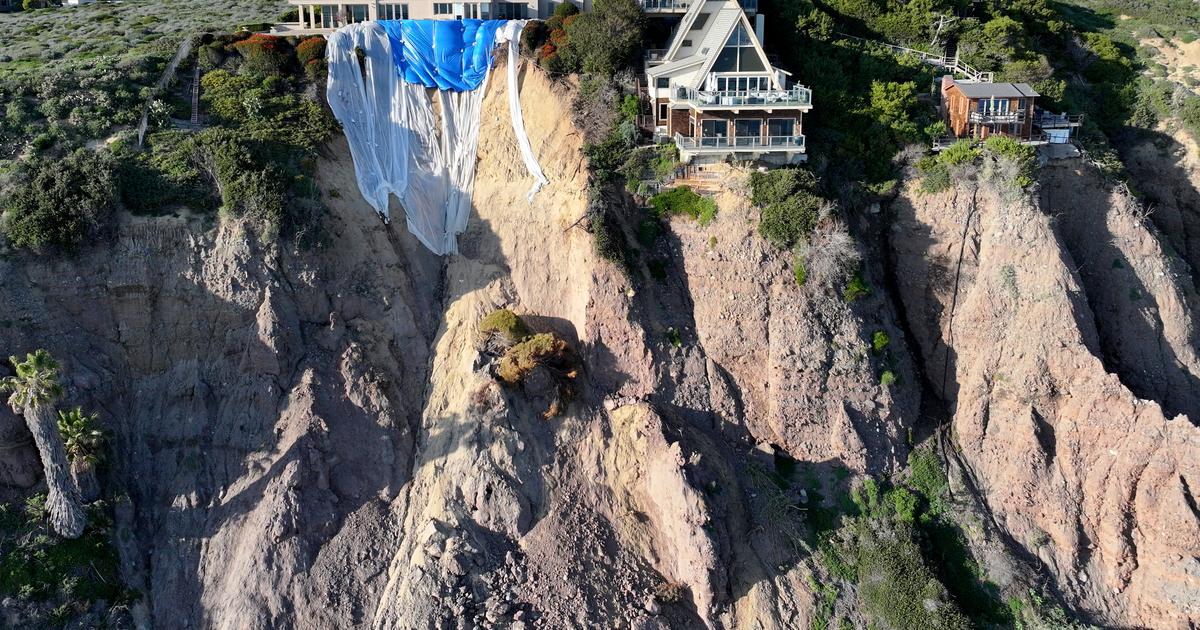The strong images and figures of the powerful storm in California 1:26
(CNN) --
Back-to- back atmospheric rivers that have battered California in recent weeks have dumped staggering amounts of rain on the state and rendered dozens of highways inoperable, with even more rain on the way for days to come.
At least 40 state highways were closed across California as of Wednesday night, Will Arnold, a spokesman for the state Department of Transportation, told CNN.
“We ask the public, if you don't need to be on the roads, please stay home and avoid non-essential travel,” Arnold said.
In 16 days, swathes of California received 50% to 70% of the amount of precipitation they would normally receive in an entire year, according to the National Weather Service.
Isolated areas, especially in the mountains near Santa Barbara, have recorded more than 90% of their annual precipitation.
At least 18 people have died in the storms in the past two weeks as the deluge inundated streets and toppled trees, among other hazards.
More than 100 National Guardsmen were in San Luis Obispo County searching for 5-year-old Kyle Doan, missing after floodwaters swept him away Monday, and more troops are arriving Thursday to help, the San Luis Obispo sheriff said. county.
advertising
The series of storm systems has resulted in swollen rivers, flooded streets, sinkholes, collapsed roads, damaged homes, gushing sewage and forcing thousands of people to flee their homes.
The 5-year-old boy who disappeared in California was torn from his mother's arms in the middle of the floods
This is how they rescue a man from a car in the midst of heavy flooding 1:06
And the evacuations continue.
Monterey County officials ordered residents to flee the low-lying areas of the Salinas River and warned that flooding from the river's rise Thursday could have devastating impacts and turn the area into an island, cutting it off from essential services.
“The Monterey Peninsula may once again become an island like it did in the 1995 floods, so please start preparing now,” warned Monterey County Sheriff Tina Nieto.
In the Bay Area's Solano County, an evacuation warning was issued Wednesday for 1,600 people amid fears Lake Curry could flood downstream.
"We've had six storms in the last two weeks," California Lieutenant Governor Eleni Kounalakis said Wednesday.
“This is the kind of weather you would have in a year and we compressed it into just two weeks.”
Although much of the state is getting a reprieve from the rain this Thursday, the barrage of water isn't over yet.
Three more atmospheric fluvial events (long, narrow regions in the atmosphere that can carry moisture thousands of miles) are expected to hit California in the next 10 days.
“This is literally the calm between the storms,” California Gov. Gavin Newsom said in a Facebook video, standing near a pier that was washed away by a recent storm.
Several additional rounds of rain are expected to affect the state in the coming days.
The most substantial rain will return to central California on Friday and spread south across much of the state on Saturday.
Storms in California leave more than a dozen dead and meteorologists warn of upcoming floods
What to expect as more rain arrives in California
Randy Diaz sweeps up water from the garage of a flooded home in Planada, California, on January 11, 2023. (Credit: Justin Sullivan/Getty Images)
Since the relentless parade of atmospheric rivers began to batter California on December 26, 2022, rainfall totals have been immense.
Between Dec. 26 and Jan. 10, downtown San Francisco received 1.5 inches of rain, Napa received 11.3 inches and downtown Sacramento received 1.1 inches, according to the National Weather Service.
Oakland recorded 328 millimeters of rain during that period;
that is the wettest 16-day period in the city's history and represents 69% of its annual average for that time period.
Atmospheric rivers will continue to affect California into next week, according to the Storm Prediction Center.
This is what you can expect:
Thursday:
Heavy rain will be limited along the northern California coast and in Oregon and Washington through Thursday night, with a slight risk of excessive rain in effect for northwestern California.
Friday:
The atmospheric river is likely to move eastward, hitting Northern California and the central California coast this Friday.
Winter storm warnings will begin to take effect across the entire Sierra Nevada mountain range.
Saturday:
A second system will move in on Saturday and the rain will spread south and begin to affect the entire state.
Excessive rain threats are likely to be issued for central California.
Heavy snow could create hazardous mountain travel conditions Friday and Saturday at elevations above 5,000 feet and in the passes of northern and central California.
Sunday:
Moisture will move to the inland western states, specifically bringing relief from drought to the Four Corners region (the region that straddles the states of Utah, Colorado, Arizona, and New Mexico).
The west coast will continue to see rain and snow in the mountains.
Monday:
Another round of moisture will hit Southern California bringing more moisture to Four Corners, lasting through Tuesday.
Meanwhile, Northern California will see a breather.
Tuesday -
A new round of moisture will begin to affect the Pacific Northwest and Northern California, continuing through Wednesday.
Central and southern California could get a respite from the rains.
Although none of the individual upcoming storms are expected to have as severe an impact as the most recent ones, the cumulative effect could be significant in a state where much of the ground is already too saturated to absorb more rain and streets are still flooded by previous storms.
“With saturated conditions already in place, limited flood impacts are expected in northern and central California through next week,” the storm prediction center said.
Highway 101 was closed on January 9, 2023 due to flooding in Gilroy, California.
(Credit: Josh Edelson/AFP/Getty Images)
"These storms have not ended the drought"
Recent storms, which have dumped snow since late December, have brought more than 10 feet of snow to parts of the Sierra Nevada mountains, according to the National Weather Service.
While the snow can be treacherous and close key roads, it could be beneficial for the drought-stricken state's water supply.
Snowpack in the Sierra Nevada accounts for 30% of California's freshwater supply in an average year, according to the California Department of Water Resources.
Current snowpack in the Sierra is 184 to 269% more than normal for this point in the season, according to the agency.
Still, it's important to remember that "these storms have not ended the drought," the California Department of Water Resources said.
“Main reservoir storage remains below average, and conditions could dry out again this winter, offsetting recent rain and snow,” state water officials said.
“California statewide reservoir storage is currently only 82% of average for this time of year.
Lake Oroville storage is 88% of average for this date and the largest reservoir in the state, Shasta, is only 70% of average for this date.”
-- CNN's Taylor Ward, Robert Shackelford and Joe Sutton contributed to this report.
California floods














